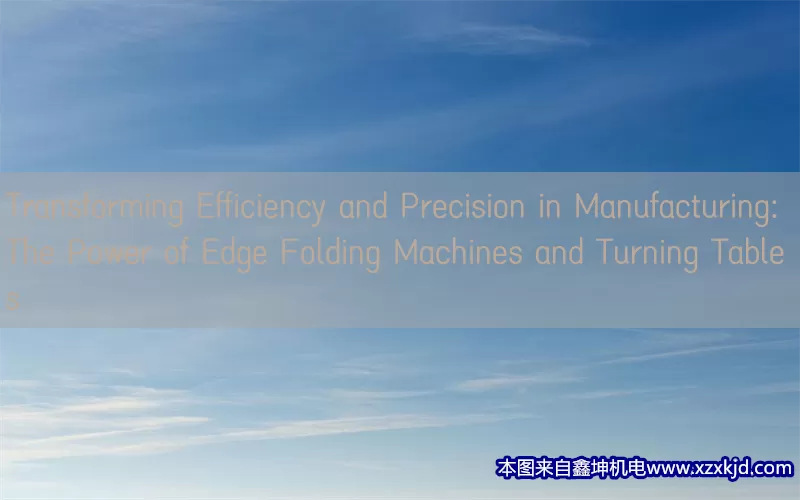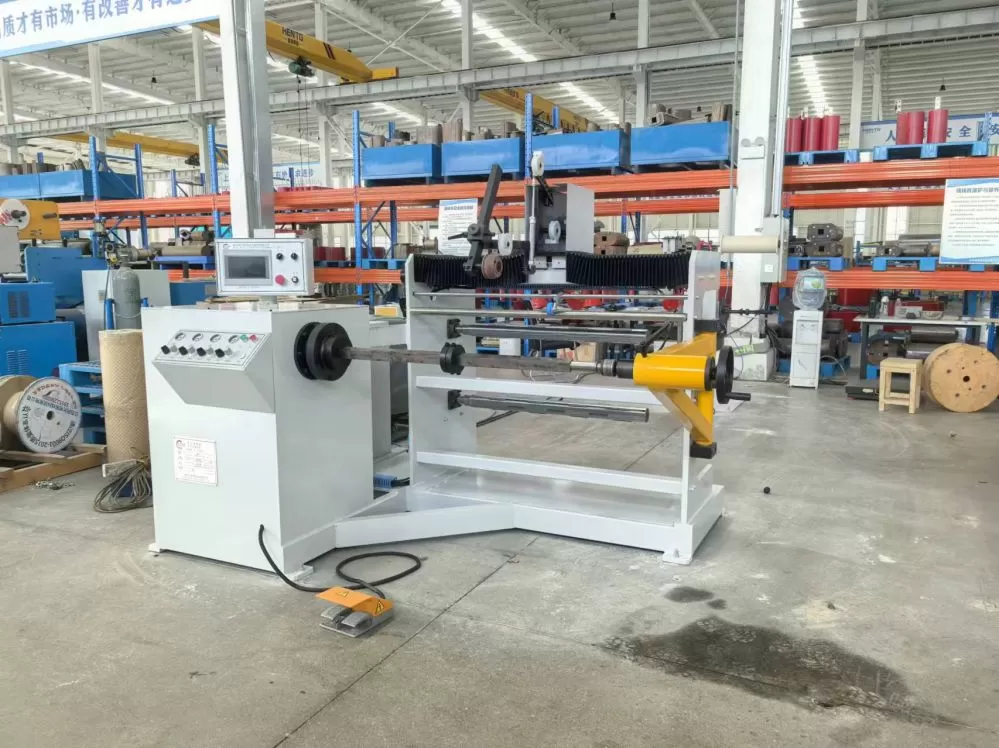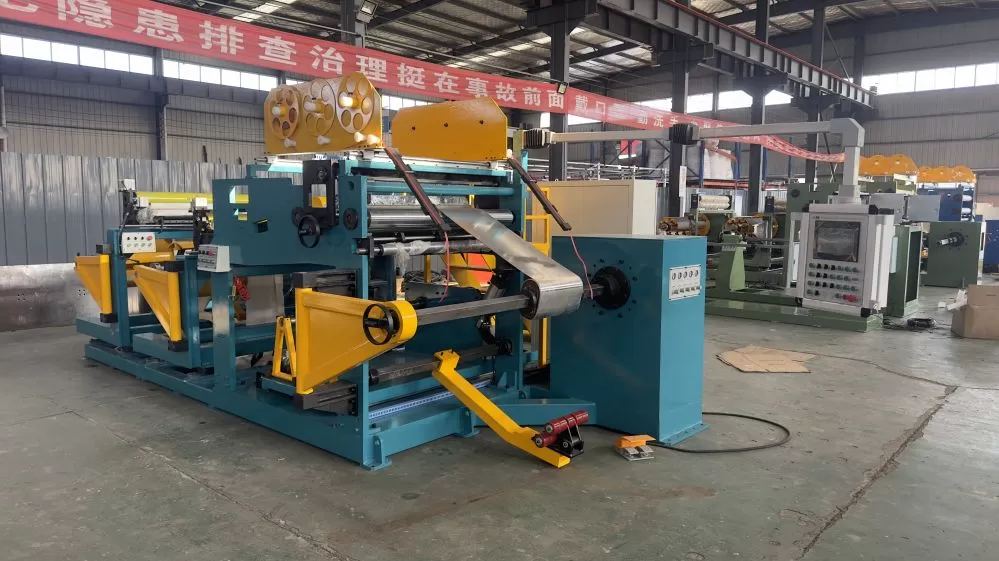Transforming Efficiency and Precision in Manufacturing: The Power of Edge Folding Machines and Turning Tables
In today’s fast-paced manufacturing landscape, efficiency, accuracy, and consistency are paramount. Industries ranging from automotive and aerospace to electronics and construction are constantly looking for ways to streamline production while maintaining high quality standards. Two essential tools driving this transformation are edge folding machines and turning tables. These technologies, once considered supplementary, have now become critical in boosting productivity and precision, especially in sheet metal processing. In this article, we delve into the core advantages of edge folding machines and turning tables, their applications, and the ways they are reshaping modern manufacturing.

The Edge Folding Machine: Precision Redefined
An edge folding machine, also known as a press brake, is a specialized piece of equipment designed to bend sheet metal at precise angles. Unlike traditional bending methods, edge folding offers unmatched control over the folding process, ensuring high-quality results across a variety of materials. Edge folding machines are employed across industries where precise metal shaping is essential, allowing manufacturers to create complex components with minimal error margins.
How Edge Folding Machines Work
Edge folding machines rely on a combination of hydraulic, electric, or pneumatic systems to apply force to a sheet of metal. The machine’s die and punch work together to press the material into the desired shape. With programmable control systems, manufacturers can achieve remarkable accuracy, often with tolerances as tight as a few thousandths of an inch.
These machines are often CNC (Computer Numerical Control) enabled, which allows for automation and repeatability. With CNC control, operators can input specific commands for each job, making it possible to handle multiple design configurations with little to no manual intervention. As a result, production speeds increase dramatically, and error rates decrease.
Key Advantages of Edge Folding Machines
Precision and Accuracy: Edge folding machines are designed for precision. Whether working on simple bends or intricate designs, these machines ensure that each fold is perfectly executed according to specifications.
Automation Capabilities: Modern edge folding machines are equipped with CNC systems that allow for easy automation. This automation ensures that large production runs can be handled quickly and with minimal oversight, reducing labor costs and boosting productivity.
Versatility: Edge folding machines can handle various materials, including aluminum, stainless steel, and other alloys. They can also be adapted to different thicknesses, making them an essential tool across industries.
Reduced Material Waste: Accurate folding reduces the chance of material misalignment or incorrect bending, minimizing waste and saving on material costs.
Improved Safety: With automated control systems, edge folding machines have built-in safety features that protect operators from harm. This has made them an increasingly attractive option for manufacturers aiming to enhance workplace safety.
Applications of Edge Folding Machines
The versatility of edge folding machines makes them suitable for a wide array of applications, particularly in sectors that rely on precise metalworking. Some of the key industries where edge folding machines are indispensable include:
Automotive Manufacturing: For producing car body panels, brackets, and other critical components, edge folding machines are used to ensure precision bends and structural integrity.
Aerospace: Aircraft components require extremely high tolerances, making edge folding machines essential for manufacturing parts that must meet strict safety and performance standards.
HVAC Systems: Ducts and other sheet metal structures in heating, ventilation, and air conditioning systems rely on edge folding machines to achieve accurate bends and smooth edges for optimal airflow.
Construction: Metal structures, roofing panels, and other architectural elements are frequently shaped using edge folding machines to meet the required design and structural specifications.
Turning Tables: Enhancing Flexibility and Efficiency in Manufacturing
While edge folding machines focus on precision bending, turning tables complement this process by providing additional flexibility in the handling and positioning of materials. A turning table, also known as a rotating platform or turntable, is a device that rotates materials or workpieces in a controlled manner, ensuring that multiple sides of a component can be accessed without the need for manual repositioning.
The Role of Turning Tables in Manufacturing
Turning tables simplify the production process by allowing for continuous access to different sides of a material or workpiece. In industries where large or heavy objects need to be processed, manually repositioning materials can be time-consuming and labor-intensive. Turning tables eliminate this need by rotating the workpiece automatically, significantly speeding up production times.
For example, when combined with an edge folding machine, a turning table can rotate a metal sheet between bends, ensuring that each side is perfectly aligned for the next fold. This reduces setup times, improves precision, and minimizes the chance of operator error.
Key Advantages of Turning Tables
Enhanced Efficiency: Turning tables enable continuous production without the need to manually handle workpieces. This reduces cycle times and speeds up operations, especially in large-scale manufacturing environments.
Increased Flexibility: By allowing workpieces to be accessed from multiple angles, turning tables provide manufacturers with greater flexibility. This is especially useful when working on components that require multiple processes or intricate designs.
Improved Ergonomics: By automating the rotation of heavy or awkwardly shaped materials, turning tables reduce the physical strain on operators, improving workplace ergonomics and reducing the risk of injury.
Seamless Integration: Turning tables can be easily integrated with other machines, such as edge folding machines, CNC machines, or robotic arms, to create a fully automated production line. This leads to faster production rates and greater overall efficiency.
Cost Savings: By minimizing manual intervention and reducing setup times, turning tables help manufacturers reduce labor costs and avoid costly production delays. The ability to handle larger or more complex workpieces also reduces the need for specialized equipment, further lowering costs.
Applications of Turning Tables
Turning tables are highly versatile and are used across a wide range of industries to improve efficiency, flexibility, and precision. Some common applications include:
Metal Fabrication: In metal fabrication shops, turning tables are used to position and rotate large sheets or components for processing, cutting, welding, or bending, ensuring that each side is worked on without manual repositioning.
Automotive Manufacturing: In the production of automotive components, turning tables assist in handling large or heavy parts, such as car frames, doors, and panels, allowing them to be processed efficiently from multiple angles.
Robotic Automation: Turning tables are often integrated with robotic arms in automated production lines. This enables continuous access to different sides of a workpiece for welding, painting, or assembly without interrupting production.
Packaging and Logistics: Turning tables are also used in packaging and logistics operations, where they rotate large packages or products for labeling, inspection, or sealing.
.1. Conclusion:
Edge folding machines and turning tables represent the cutting edge of modern manufacturing. Together, they enable manufacturers to achieve new levels of precision, efficiency, and versatility in their production processes. Edge folding machines provide the accuracy needed for complex metalworking, while turning tables offer the flexibility to handle workpieces from multiple angles. By integrating these tools into automated systems, industries can reduce costs, minimize waste, and enhance overall productivity.
Whether you are in automotive, aerospace, or general manufacturing, investing in these advanced technologies can significantly elevate your production capabilities. As the demand for high-quality, cost-effective manufacturing continues to grow, the edge folding machine and turning table will remain indispensable tools in the pursuit of manufacturing excellence.
英雄不问出处,文章要问来源于何处。
提示:在享受本文内容的同时,请注意版权归属 徐州鑫坤机电设备有限公司https://www.xzxkjd.com如果您觉得有价值欢迎分享,但请务必注明出处,感谢您的理解,谢谢!
以下部分内容需要登录查看 立即登录
相关内容
- Revolutionizing Efficiency: The Role of Silicon Steel Core Cutting Machines in Modern Manufacturing
- Press Machine Industry Insights & Trends: Unveiling the Future of Manufacturing Efficiency
- The Ultimate Guide to High and Low Voltage Winding Machines: Efficiency Meets Precision
- Revolutionizing Industrial Manufacturing with the Silicon Steel Winding Machine
- The Future of Manufacturing: How the Amorphous Winding Machine Revolutionizes Efficiency
- The Evolution of High-Voltage Foil Winding Machines: Revolutionizing Efficiency and Precision in Ele
- The Power of Precision: Revolutionizing Industry with Press Machines (压机)
- 供需裂口持续扩大:2025年铜价暴涨,产业链如何应对?
- 铜,新时代的“石油”?2025年价格狂飙背后的战略博弈
- 从能源革命到智能时代:2025铜价暴涨背后的全球新逻辑
- 铜价创历史新高!绿色转型与供需失衡背后的财富浪潮
- 2025铜价为何一飞冲天?三大核心驱动力深度解析
 简体中文
简体中文 繁體中文
繁體中文 English
English Nederlands
Nederlands Français
Français Русский язык
Русский язык Polski
Polski 日本語
日本語 ภาษาไทย
ภาษาไทย Deutsch
Deutsch Português
Português español
español Italiano
Italiano 한어
한어 Suomalainen
Suomalainen Gaeilge
Gaeilge dansk
dansk Tiếng Việt
Tiếng Việt Pilipino
Pilipino Ελληνικά
Ελληνικά Maori
Maori tongan
tongan ᐃᓄᒃᑎᑐᑦ
ᐃᓄᒃᑎᑐᑦ ଓଡିଆ
ଓଡିଆ Malagasy
Malagasy Norge
Norge bosanski
bosanski नेपालीName
नेपालीName čeština
čeština فارسی
فارسی हिंदी
हिंदी Kiswahili
Kiswahili ÍslandName
ÍslandName ગુજરાતી
ગુજરાતી Slovenská
Slovenská היברית
היברית ಕನ್ನಡ್Name
ಕನ್ನಡ್Name Magyar
Magyar தாமில்
தாமில் بالعربية
بالعربية বাংলা
বাংলা Azərbaycan
Azərbaycan lifiava
lifiava IndonesiaName
IndonesiaName Lietuva
Lietuva Malti
Malti català
català latviešu
latviešu УкраїнськаName
УкраїнськаName Cymraeg
Cymraeg ກະຣຸນາ
ກະຣຸນາ తెలుగుQFontDatabase
తెలుగుQFontDatabase Română
Română Kreyòl ayisyen
Kreyòl ayisyen Svenska
Svenska հայերեն
հայերեն ဗာရမ်
ဗာရမ် پښتوName
پښتوName Kurdî
Kurdî Türkçe
Türkçe български
български Malay
Malay मराठीName
मराठीName eesti keel
eesti keel മലമാലം
മലമാലം slovenščina
slovenščina اوردو
اوردو አማርኛ
አማርኛ ਪੰਜਾਬੀName
ਪੰਜਾਬੀName albanian
albanian Hrvatski
Hrvatski Suid-Afrikaanse Dutch taal
Suid-Afrikaanse Dutch taal ខ្មែរKCharselect unicode block name
ខ្មែរKCharselect unicode block name




